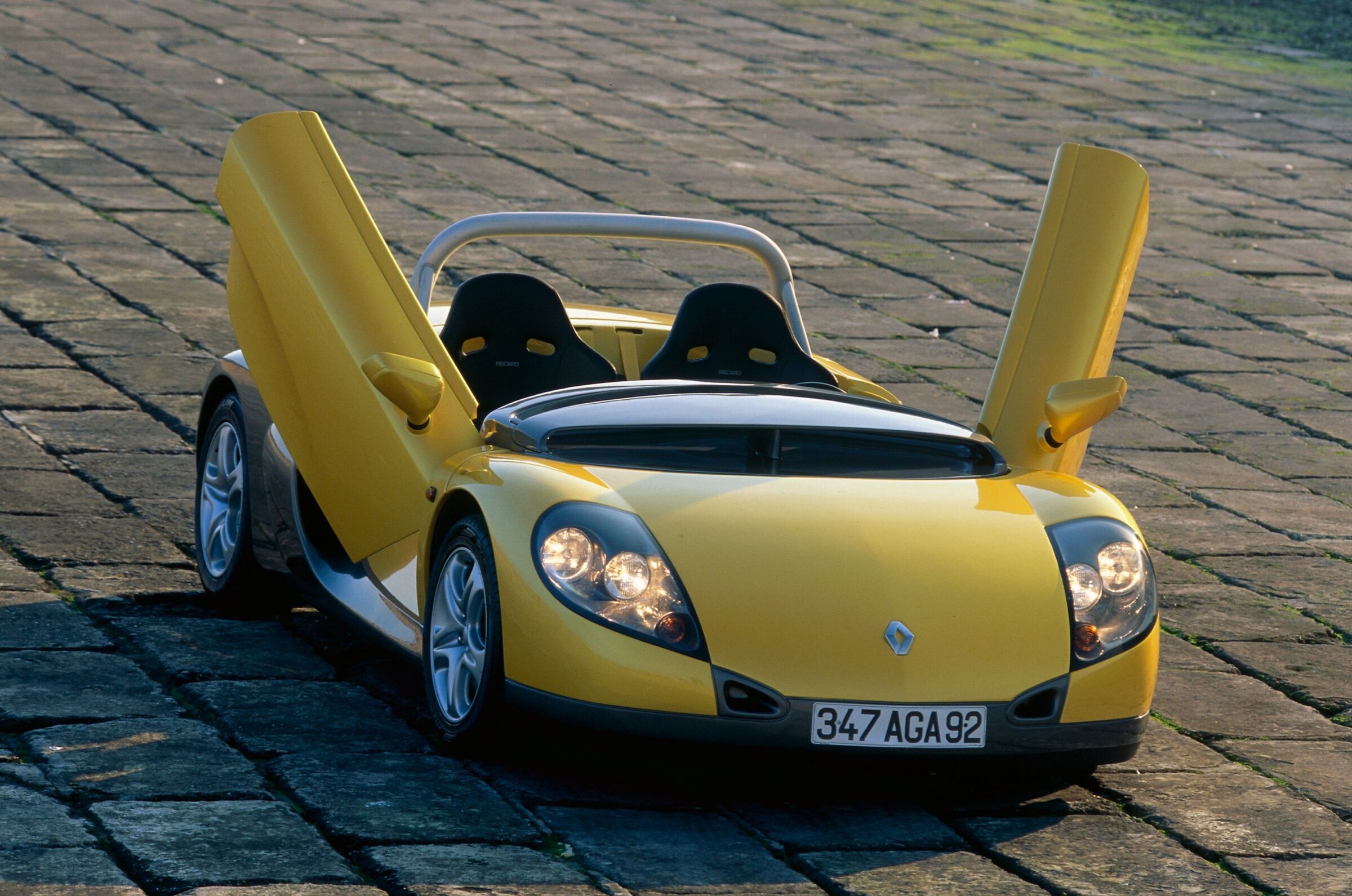Ford Mustang Mach 1
17 years after the last Mustang Mach 1, Ford revives this popular and powerful special edition model. It first appeared in 1969 and deliberately used the term for the speed of sound, first achieved by Chuck Yeager in 1947, to draw the attention of customers. The Mach 1 bridged the gap in the portfolio that opened up between the normal Mustang and the Shelby offshoots. In the first model year, Ford set 295 speed and average records with this vehicle on the Bonneville Salt Flats. In addition, private teams won the SCCA rally championships in 1969 and 1970 with the Mustang Mach 1, and the latest edition of this special model again impresses with a powerful V8 engine with adapted chassis and independent aerodynamic components.
In connection with the new Mach 1, Ford itself speaks of the Mustand model best suited for track-use. Components from the Shelby GT350 and Shelby GT500 are used to achieve this. Customers who set off on more than just occasional trackdays can further refine the basic sporting set-up with an optional Handling Package. The five-liter V8 engine under the bonnet delivers 480 hp and 570 newtonmeters of torque in the Mach 1. The intake manifold, oil filter adapter and oil cooler, which reduces the oil temperature in the engine by 50 percent, are from the Shelby GT350. Power is transmitted to the rear wheels by a six-speed manual transmission from Tremec with rev-matching function and its own oil cooler or, at extra cost, by the new ten-speed automatic transmission with unique calibration. Vehicles with Handling Package come exclusively with the manual transmission.














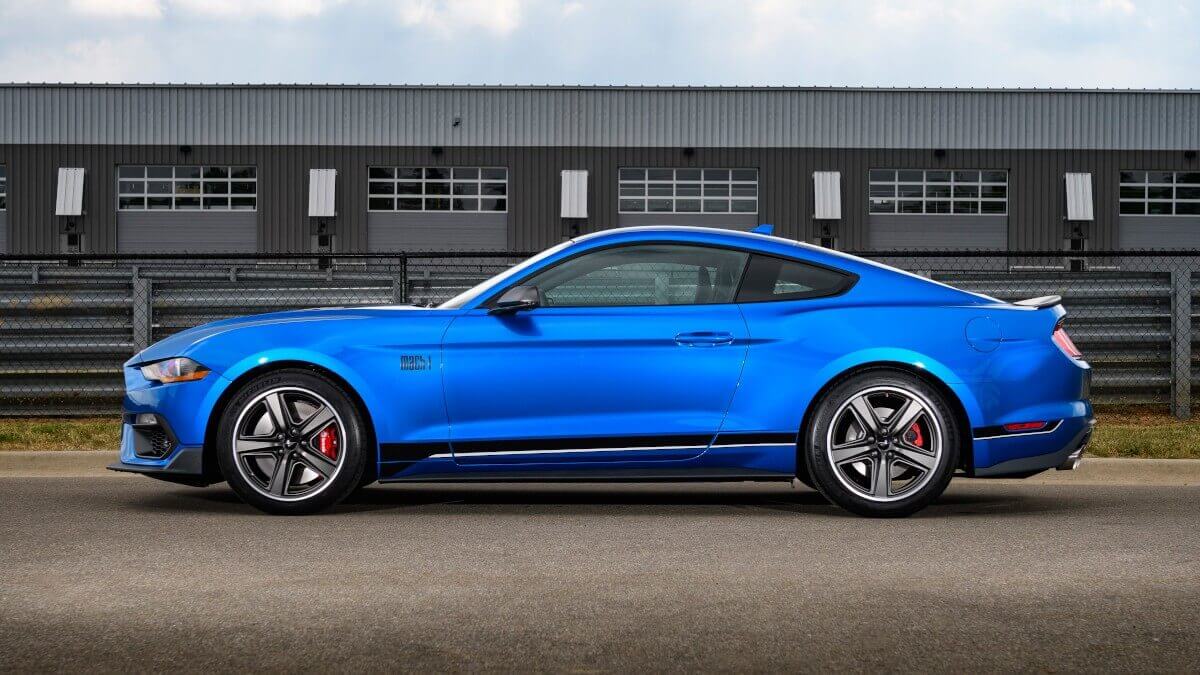

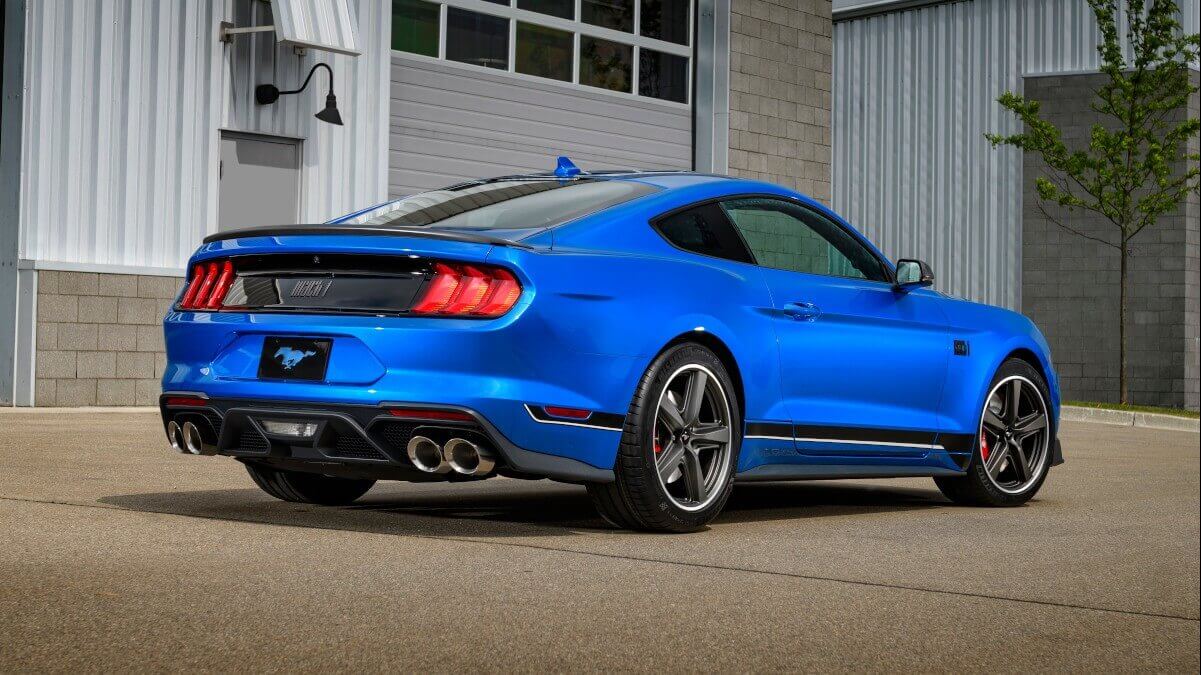

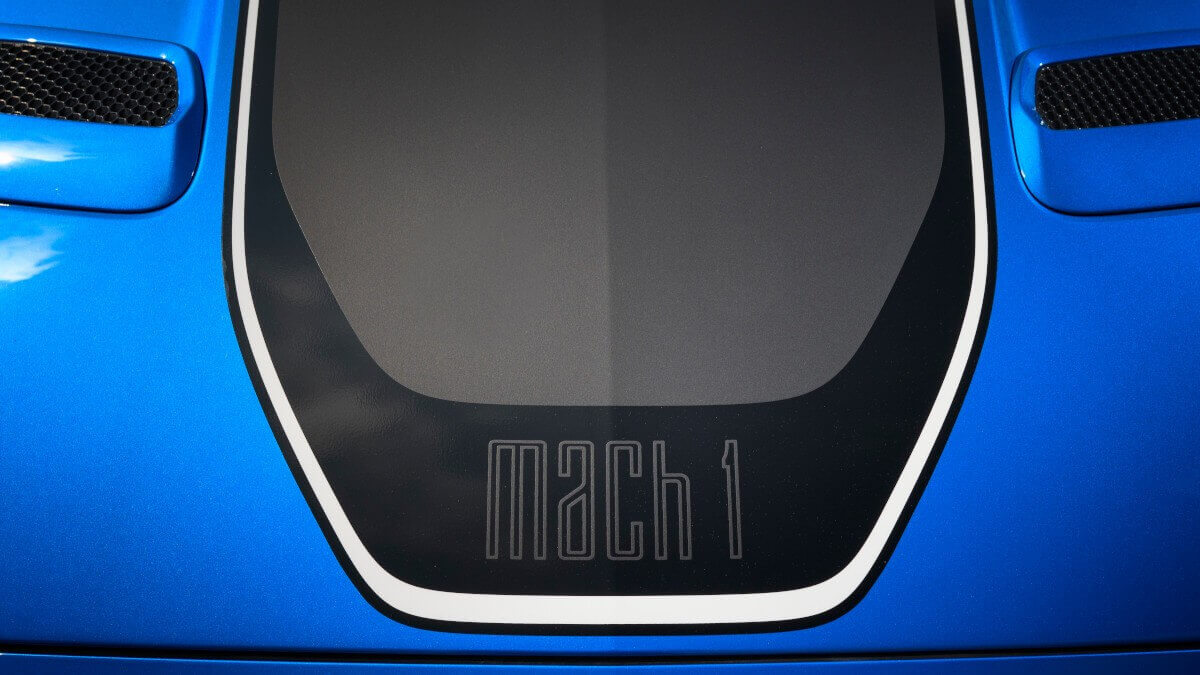

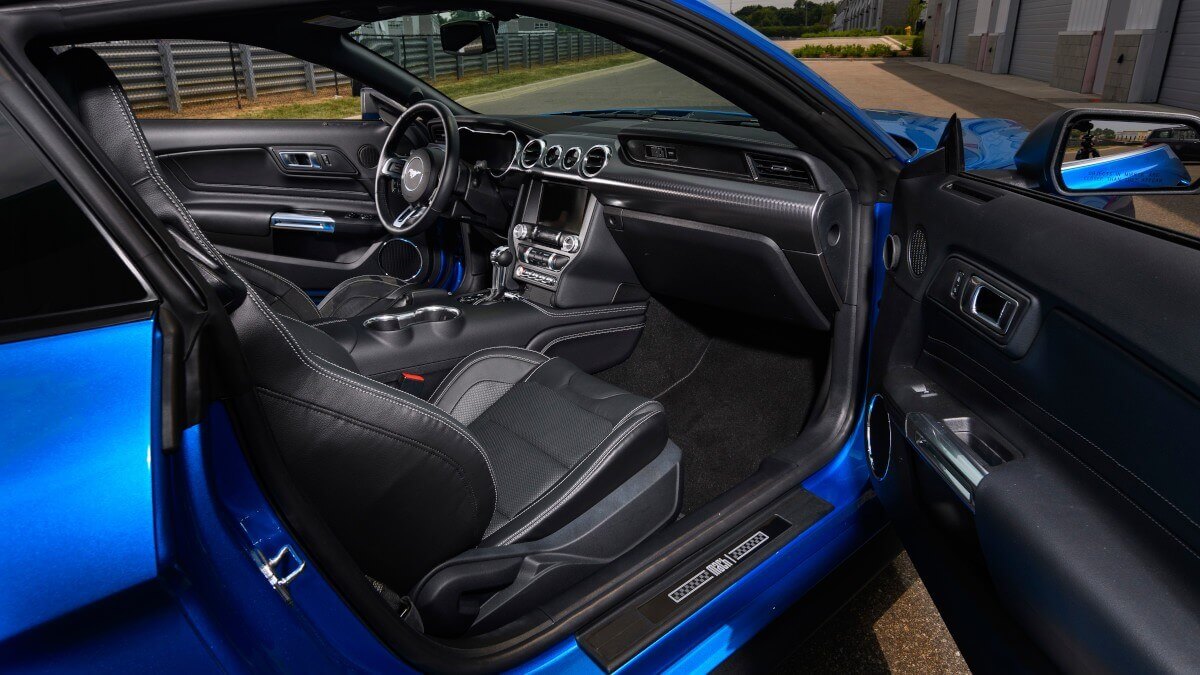

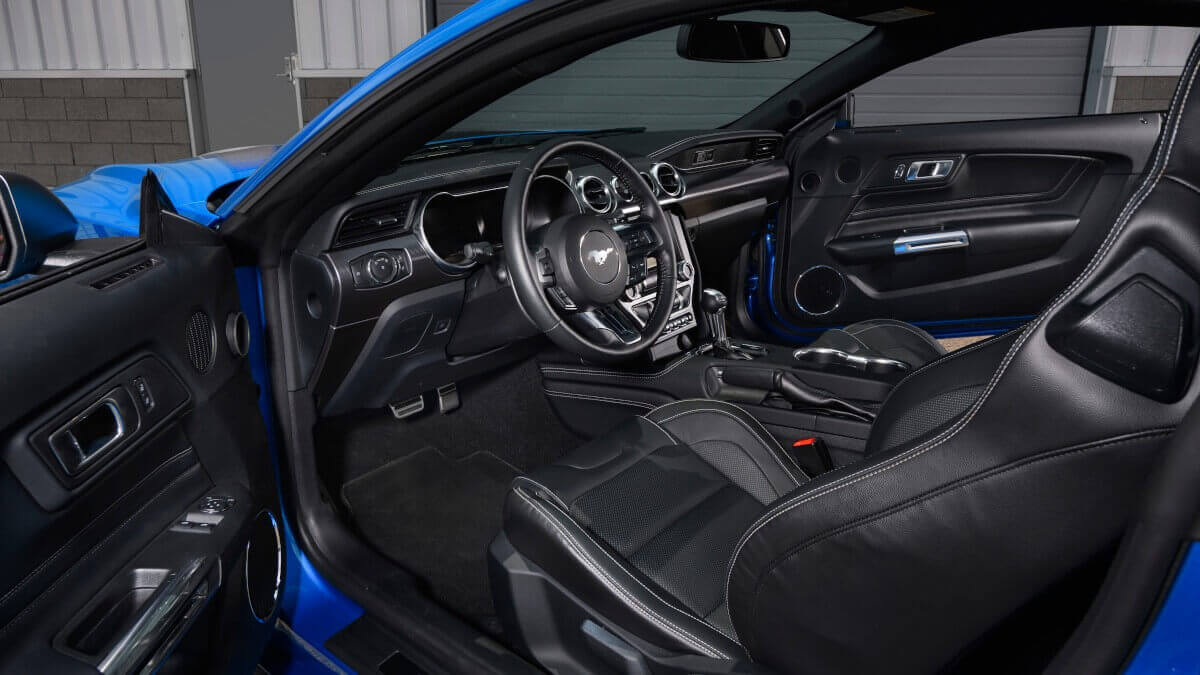

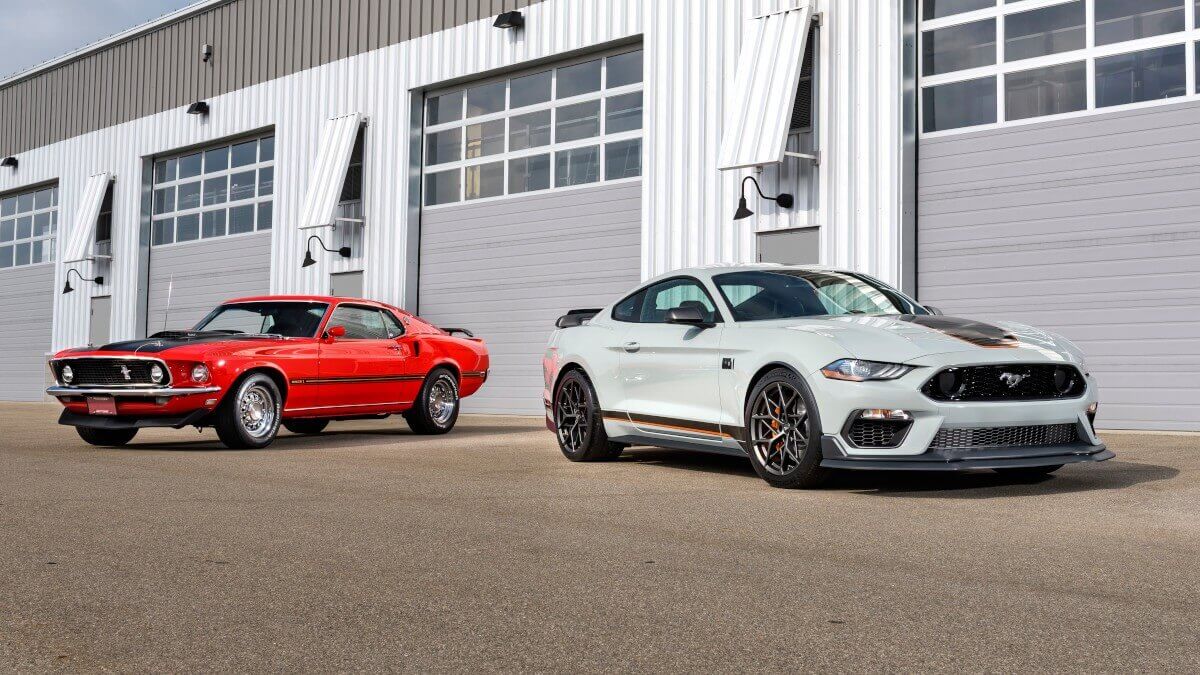

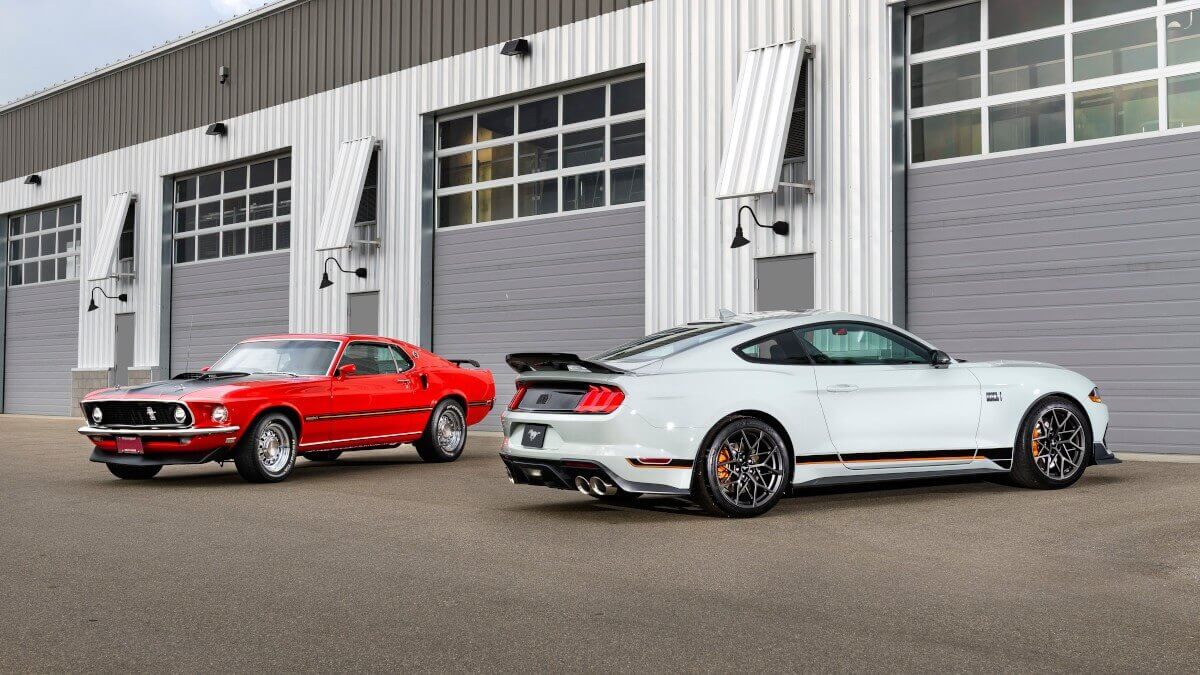











The complete front end of the Mustang Mach 1 received a new design with larger air intakes and spoiler lip to increase the downforce altogether by 22 percent compared to the normal Mustang GT, with Handling Package even by almost 150 percent. Matching the legendary model from 1969, a shark nose like, three-dimensional radiator grille with a honeycomb grid is used, in which fake lamp openings are integrated. The Mustang logo doesn’t have any chrome, but only shines slightly metallic. Behind the front wheels and centrally on the rear panel there are ‘Mach 1’ lettering in black. For the wing mirror caps and the rear spoiler lip Ford chose the color ‘Magnetic’ in a low-gloss finish. The wheel arches contain newly designed 19-inch light-alloy wheels whose design is deliberately reminiscent of the ‘Magnum 500’ wheels of the 1969 Mach 1. The optional Handling Package gives the car a larger front splitter, new sill covers, a much larger rear spoiler with Gurney flap and its own, wider 19-inch wheels. For the bodywork, the paint colors ‘Iconic Silver’, ‘Oxford White’, ‘Shadow Black’, ‘Grabber Yellow’, ‘Race Red’, ‘Twister Orange’, ‘Velocity Blue’ and ‘Fighter Jet Gray’ are available, whereby the gray is only available in combination with the optional Appearance Package, with the additional contrast stripes.
Inside, the dashboard features ‘Dark Spindrift’ trim combined with a few aluminium accents. In addition, there is an Ebony black leather upholstery with white contrast stitching, new door sill trims with ‘Mach 1’ lettering, a separate start logo in the 12.3-inch central display between the digital instruments and a gear lever with a white ball for cars with manual transmission. The respective serial number of the car is engraved on a metal plate above the glovebox. Ford promises to launch only a limited edition of the Mustang Mach 1 for the USA and Canada, but doesn’t announce an exact number or prices.
Images: Ford



